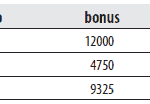In addition to the SELECT statement, which was introduced earlier in chapter "Queries", there are three other DML statements: INSERT, UPDATE, and DELETE. Like the SELECT statement, these three modification statements operate either on tables or on … [Read more...] about INSERT Statement (INSERT INTO)
Modification of a Table's Contents
UPDATE Statement (Modifying Data)
The UPDATE statement modifies values of table rows. This statement has the following general form:Rows in the tab_name table are modified in accordance with the WHERE clause. For each row to be modified, the UPDATE statement changes the values … [Read more...] about UPDATE Statement (Modifying Data)
DELETE Statement – Deleting rows
The DELETE statement deletes rows from a table. This statement has two different forms:All rows that satisfy the condition in the WHERE clause will be deleted. Explicitly naming columns within the DELETE statement is not necessary (or allowed), … [Read more...] about DELETE Statement – Deleting rows
TRUNCATE TABLE, MERGE & OUTPUT Clause
TRUNCATE TABLE StatementThe Transact-SQL language also supports the TRUNCATE TABLE statement. This statement normally provides a “faster executing” version of the DELETE statement without the WHERE clause. The TRUNCATE TABLE statement deletes all … [Read more...] about TRUNCATE TABLE, MERGE & OUTPUT Clause


